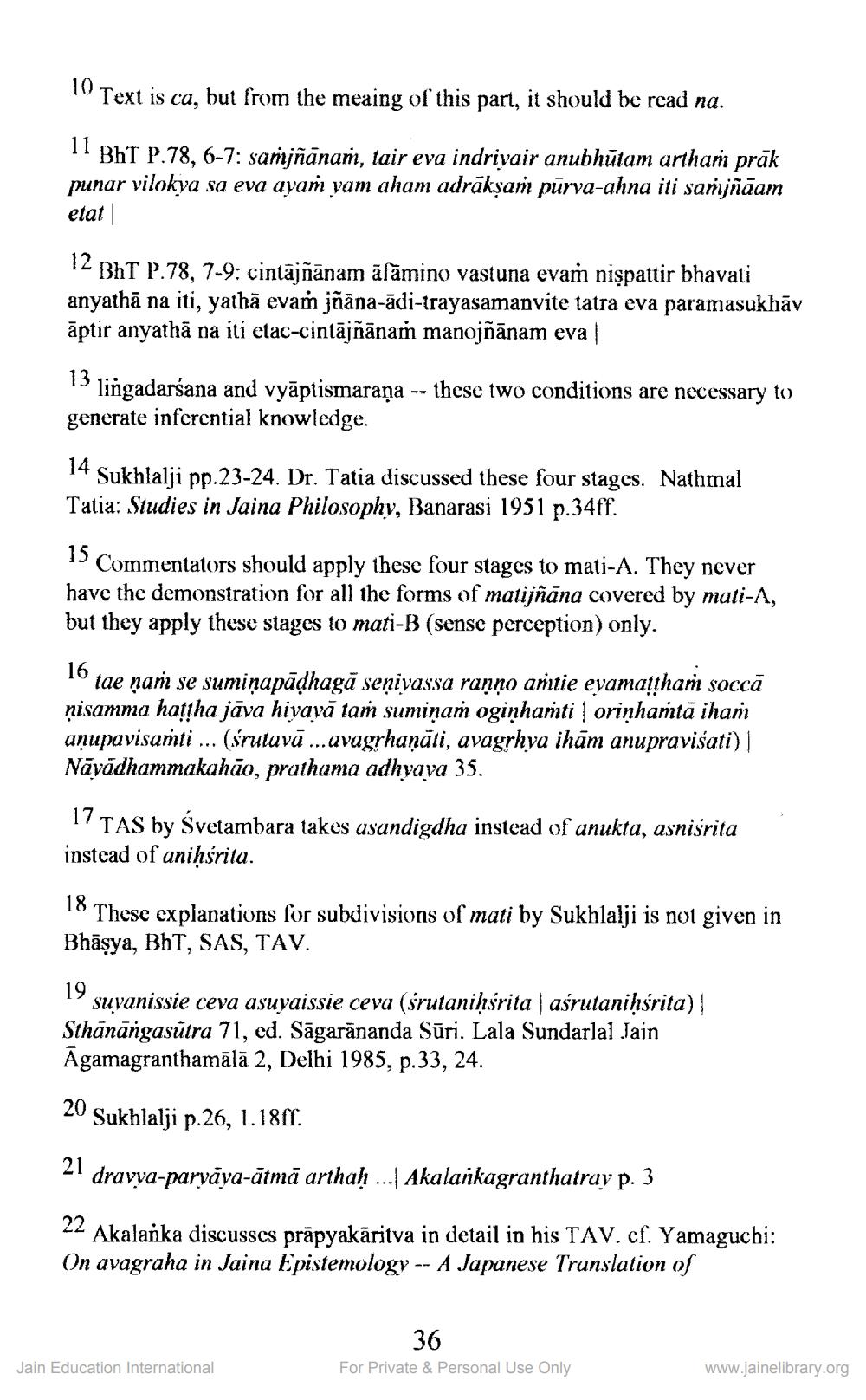________________
10 Text is ca, but from the meaing of this part, it should be read na.
1 BhT P.78, 6-7: samjñānam, tair eva indrivair anubhūtam artham prāk punar vilokya sa eva ayam yam aham adrākşam pūrva-ahna iti samjñāam etat|
12 BhT P.78, 7-9: cintajñānam āfāmino vastuna evam nispattir bhavati anyathā na iti, yathă evaṁ jñāna-ādi-trayasamanvite tatra eva paramasukhāv āptir anyathā na iti etac-cintājñānas manojñānam eva
13 lingadarśana and vyāptismaraņa -- these two conditions are necessary to generate inferential knowledge.
14 Sukhlalji pp.23-24. Dr. Tatia discussed these four stages. Nathmal Tatia: Studies in Jaina Philosophy, Banarasi 1951 p.34ff.
1 Commentators should apply these four stages to mati-A. They never have the demonstration for all the forms of matijñāna covered by mati-A, but they apply these stages to mati-B (sense perception) only.
10 tae nam se sumiņapādhagā senivassa ranno amtie eyamattham soccā ņisamma hatıha jāva hiyavā taṁ sumiņam oginhamti oriņhamtā ihan anupavisamti ... (śrutavā ... avagrhaņāti, avagrhya ihām anupravisati) || Nāvādhammakahão, prathuma adhyava 35.
17 TAS by Svetambara takes usandigdha instead of unukta, asnisrita instead of aniḥsrita.
18 These explanations for subdivisions of mati by Sukhlalji is not given in Bhāşya, BHT, SAS, TAV.
19
1% suyanissie ceva asuyaissie ceva (śrutaniḥśrita | asrutaniḥśrita) Sthānangasūtra 71, ed. Sāgarānanda Sūri. Lala Sundarlal Jain Āgamagranthamālā 2, Delhi 1985, p.33, 24.
20 Sukhlalji p.26, 1.181f.
21 dravya-paryāya-ātmā arthah .... Akalankagranthatray p. 3
22 Akalanka discusses prāpyakāritva in detail in his TAV. cf. Yamaguchi: On avagraha in Jaina Epistemology -- A Japanese Translation of
36 For Private & Personal Use Only
Jain Education International
www.jainelibrary.org




